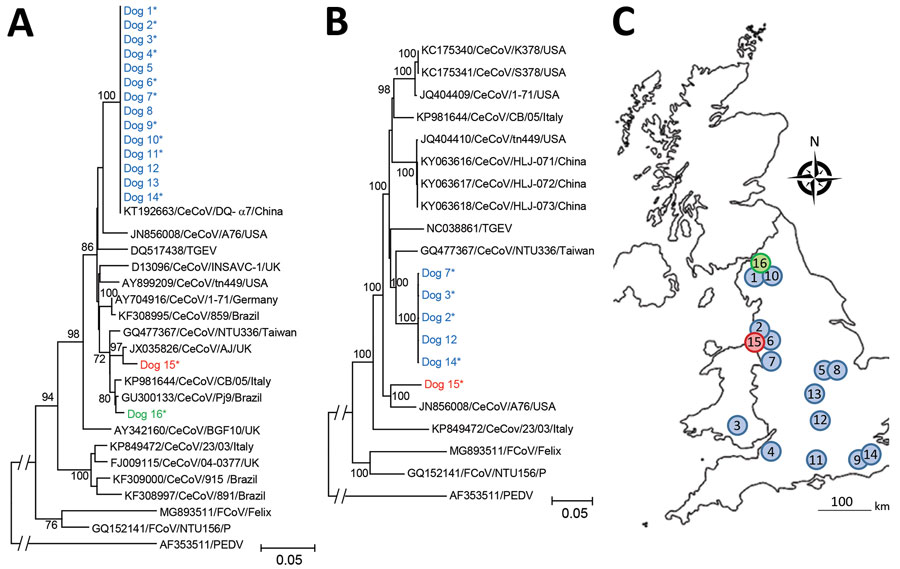Outbreak of Severe Vomiting in Dogs Associated with a Canine Enteric Coronavirus, United Kingdom
Alan D. Radford

, David A. Singleton, Chris Jewell, Charlotte Appleton, Barry Rowlingson, Alison C. Hale, Carmen Tamayo Cuartero, Richard Newton, Fernando Sánchez-Vizcaíno, Danielle Greenberg, Beth Brant, Eleanor G. Bentley, James P. Stewart, Shirley Smith, Sam Haldenby, P.-J. M. Noble, and Gina L. Pinchbeck
Author affiliations: Institute of Infection, Veterinary and Ecological Sciences, University of Liverpool Leahurst Campus, Neston, UK (A.D. Radford, D.A. Singleton, B. Brant, E.G. Bentley, J.P. Stewart, S. Smith, P.-J.M. Noble, G.L. Pinchbeck); Lancaster University Centre for Health Informatics, Lancaster, UK (C. Jewell, C. Appleton, B. Rowlingson, A.C. Hale); University of Bristol, UK (C.T. Cuartero, F. Sánchez-Vizcaíno); Animal Health Trust, Lanwades Park, Kentford, UK (R. Newton); The Liverpool Vets, Liverpool, UK (D. Greenberg); Centre for Genomic Research, University of Liverpool, Liverpool (S. Haldenby)
Main Article
Figure 4

Figure 4. Phylogenetic analysis of canine enteric coronavirus strains, including locations were sequences were obtained, in investigation of dogs with vomiting, United Kingdom. Trees are based on nucleotide sequences for M-gene (final alignment 299 positions) (A) and whole genome (final alignment 26,564 positions) (B). Evolutionary analysis was performed using the neighbor-joining method. Bootstrap testing using 1,000 replicates was applied; only values >70 are indicated. Sequences identified in this study are indicated in blue (strain 1), red (strain 2), and green (strain 3). Asterisks (*) indicate samples from animals meeting the case definition. Each phylogeny included closest matches in GenBank, as well as representative published canine coronavirus, feline coronavirus, and transmissible gastroenteritis virus isolates. Scale bars indicate substitutions per site. C) Approximate geographic location of sequences obtained in this study, number- and color-matched to sequences shown in panels A and B.
Main Article
Page created: November 10, 2020
Page updated: January 23, 2021
Page reviewed: January 23, 2021
The conclusions, findings, and opinions expressed by authors contributing to this journal do not necessarily reflect the official position of the U.S. Department of Health and Human Services, the Public Health Service, the Centers for Disease Control and Prevention, or the authors' affiliated institutions. Use of trade names is for identification only and does not imply endorsement by any of the groups named above.
